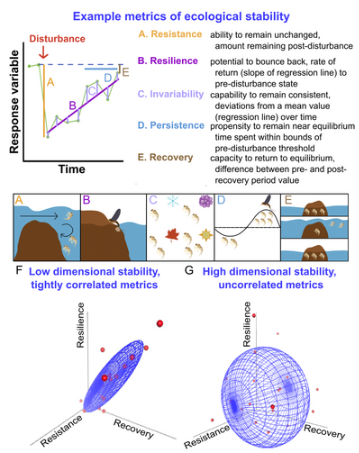無脊椎動物へのダメージは深刻度より発生時期が大きいという研究結果 Study finds that the timing of disruptions is more damaging to invertebrates than severity
2023-01-30 ペンシルベニア州立大学(PennState)
◆この研究で採用された次元安定性の枠組みは、複数の安定性指標を分析する革新的なアプローチですが、自然生態系の長期観察研究ではほとんど使われてこなかったと、アレン教授は説明しています。本研究では、この枠組みを、頻繁に水路攪乱が起こる砂漠の断続的な小川に生息する大型無脊椎動物の長期データセットに適用しました。
◆その結果、無脊椎動物の個体群の安定性は時間と共に広く変化し、個々の個体群の安定性指標に影響を及ぼすには、一貫した冬の擾乱よりも大きく変化するモンスーンの擾乱がより重要であることがわかりました。
◆アリゾナ州のシカモア・クリークは、世界で最も広範囲に研究されている砂漠の川の一つです。この川は164平方マイルの山岳地帯の流域を流れており、ソノラ砂漠に流量計が設置されています。この地域は、半乾燥で高温の気候です。降水量のほとんどは、冬期(12月から3月)またはモンスーン期(7月から9月)に発生します。シカモア・クリークは鉄砲水が発生しやすいですが、年によっては流量が大幅に減少し、枯渇することもあります。
◆1985年から1999年、2010年から2019年の35年間にわたり、シカモアクリークで底生大型無脊椎動物のサンプリングが行われました。どちらのサンプリング期間も同じ場所を使用しました。サンプルは、長さ325フィート以上の砂利道全体の5か所で、河床堆積物コアラーを使用して深さ約15センチまで採取されました。サンプルは野外で目の細かいネットで漉され、18の分類群から生物が同定された。
◆シカモア・クリークでは、これらの生物が冬の洪水にどのように反応するかについての長い記録があります。洪水は毎年冬に起こるという意味で予測可能ですが、その規模は年によって異なります。ある年には大洪水が起こり、別の年には弱い洪水が起こった。研究者たちは、これらの洪水の規模がさまざまな無脊椎動物の個体群の安定性にどのような影響を及ぼしたかを調べることができた。
◆Limnology and Oceanography Lettersに最近掲載された研究結果では、研究者は、彼らが利用した次元安定性の枠組みに基づいて、シカモアクリークの水生無脊椎動物の運命について報告しています。
<関連情報>
- https://www.psu.edu/news/research/story/aquatic-organisms-respond-flooding-and-drought-disturbance-different-ways/
- https://aslopubs.onlinelibrary.wiley.com/doi/10.1002/lol2.10303
分類学的同一性、生物多様性、および先行する攪乱が河川無脊椎動物の寸法安定性を形成していること Taxonomic identity, biodiversity, and antecedent disturbances shape the dimensional stability of stream invertebrates
Daniel C. Allen, Brian A. Gill, Anya Metcalfe, Sophia Bonjour, Scott Starr, Junna Wang, Diana Valentin, Nancy B. Grimm
Limnology and Oceanography Letters Published: 12 January 2023
DOI:https://doi.org/10.1002/lol2.10303

Abstract
The “dimensional stability” approach measures different components of ecological stability to investigate how they are related. Yet, most empirical work has used small-scale and short-term experimental manipulations. Here, we apply this framework to a long-term observational dataset of stream macroinvertebrates sampled between the winter flooding and summer monsoon seasons. We test hypotheses that relate variation among stability metrics across different taxa, the magnitude of antecedent (monsoon) and immediate (winter) floods to stability metrics, and the relative importance of disturbance magnitude and taxonomic richness on community dimensional stability. Cluster analysis revealed four distinct stability types, and we found that the magnitude of floods during the prior monsoon was more important in influencing stability than the winter flood itself. For dimensional stability at the community level, taxonomic richness was more important than disturbance magnitude. This work demonstrates that abiotic and biotic factors determine dimensional stability in a natural ecosystem


